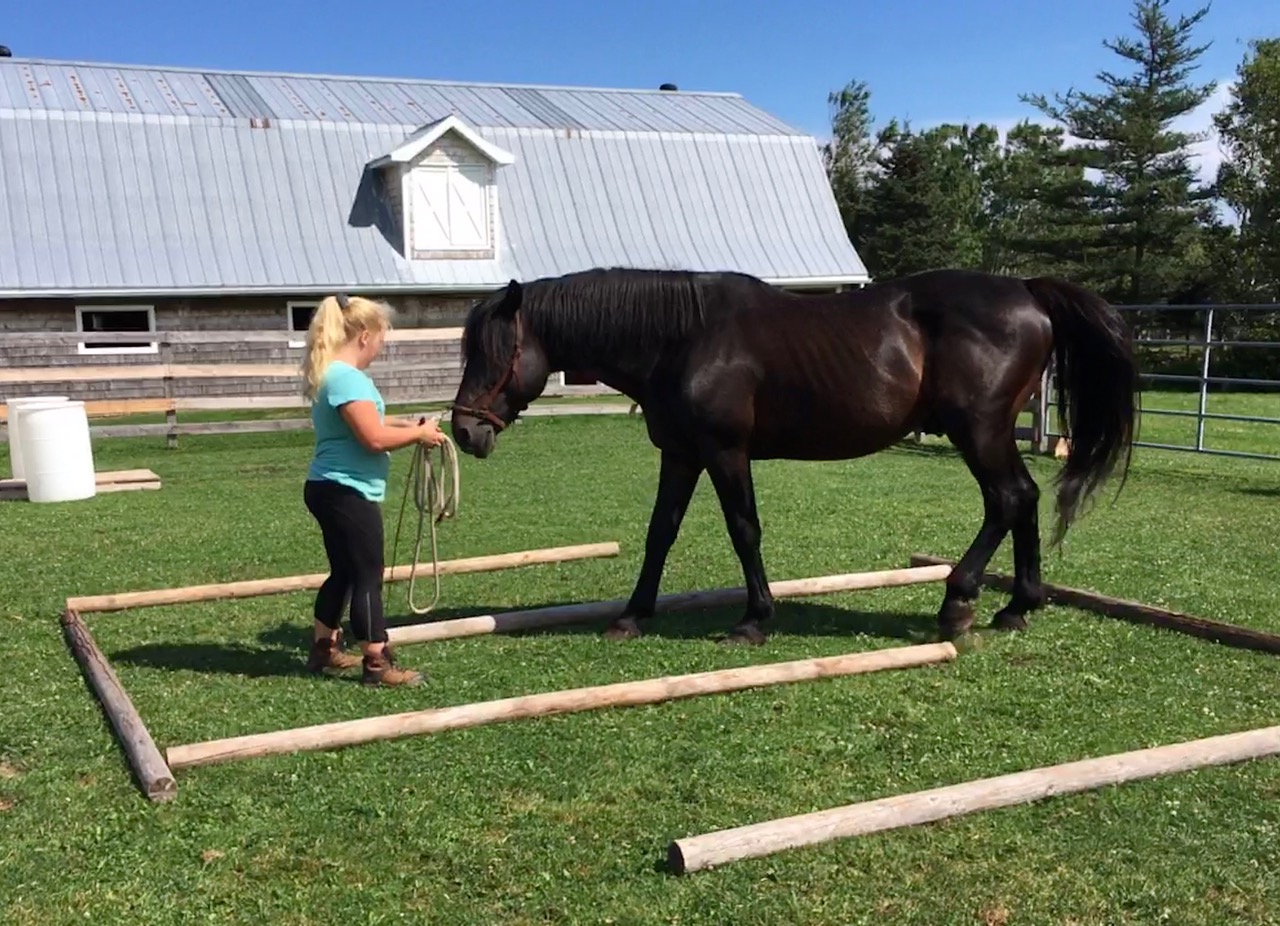When a horse turns away from the halter, I get curious. About my own behaviour: What did we do last time? Was I picky and demanding? Did I listen? And I get curious about the horse: How does he or she feel today? Do they hate the horseflies? Is it me with halter, or just me, or just halter?
This phenomenon used to hurt my feelings. But now I respond differently. Now, I am grateful that my horse is communicating with me! And I get inquisitive. Having made my way through this with Sylvie, I now know this dynamic can be the start of a very interesting conversation. Turning away from the halter is one way the horse can say “No thank you.” When that happens, I aspire to discover what will inspire my horse to say, “Yes!”
But first… I must abandon all hope of fruition. Let go of my plans and agenda. Place my attention on my equine partner with love and curiosity. And remember that this is a relationship that I want to feel good for both of us. It is out of mutual delight and pleasure that artistic dressage or joyful jumping or happy trail rides will come. And they will come if I attend to the conversation that is happening now.
Since I began spending time with Image a couple of weeks ago, he has been saying, “No thank you.” While he does say yes to trail rides, we can only do that occasionally since I am alone on the farm most of the time. So I have abandoned my plans and ideas about riding (which is REALLY hard!). Instead, I set up a goofy obstacle course in my riding ring as a playground for everyone. Pool noodles, labyrinth, small bridge, and more. Image was first up and he said “Yes.” I took him around first and he negotiated everything with only a little hesitation, then my older student took him, then the young student. Then we try with the others, eight year old Trudy and the yearlings.
As we go through the obstacles, my attitude is inquisitive and playful. I don’t care if we get it “right” or even get through every one. We are finding things out together! I note what is easy or hard for each horse and each human. If I can, I include a more confident horse to help a less confident horse. I encourage my young human students to just try and see how it goes. Messy is great!
Going around and through the obstacles reveals the spots where communication could be improved. To negotiate the various obstacles requires some basic vocabulary – stop, start, left, right, forward, back, pivot, one step, move your shoulder, move your bum, and so on. Each horse shows where they need help, or rather… where I need to communicate better what I am asking for.
So this week we are all reviewing that vocabulary. Image knows it but has a habit of bracing, so we are exploring different ways of asking that help him stay soft. Trudy is unsure about even coming to the conversation, so the haltering is particularly interesting. The yearlings are willing and love the attention. They just need to expand and refine the responses we have established through routine handling: move this part of your body, come with me, don’t crowd me, stand for trimming, and so on.
The dog days of summer are a good time to not try too hard. To relax and have fun. To abandon any hope of fruition. If the horseflies are bad we just play in the barn aisle. Sometimes it is just grooming and loving, remembering that every interaction between human and horse is an opportunity to build our relationship. One day this week I put a saddle on Image and explored how we do through obstacles with only a rope halter! That was fun… and revealing!
The answer is, “YES!” I practice YES. I look for YES. Much easier to do when I have let go of attachment to a particular outcome! Everyone wants to feel encouraged, animals included.
NB: “Abandon any hope of fruition” is a Buddhist slogan included in a body of teaching called The Seven Points of Mind Training. For more, here is an article by Pema Chodron: https://www.lionsroar.com/dont-give-up/.

“Image and my student Anna through the labyrinth, photo by Katharine Locke.”
